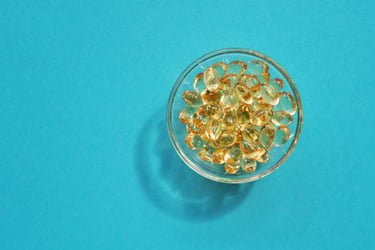eStoreRx™
Online Supplement Dispensary
eStoreRx™ is an easy direct-to-patient ordering & fulfilment program for lifelong wellness.
For over 40 years, Biotics Research Corporation has revolutionized the nutritional supplement industry by utilizing “The Best of Science and Nature”. Combining nature’s principles with scientific ingenuity, our products magnify the nutritional
eStoreRx™ is an easy direct-to-patient ordering & fulfilment program for lifelong wellness.
Biotics Research is proud to expand our commitment to education with the Wellness Unfiltered Pro Podcast. Each episode delves into key health topics and the clinical applications of our premier products. Through candid, insightful conversations, our team offers practical guidance to keep you informed and empowered as a healthcare professional.
December 18 2025
Low-carbohydrate diets are perhaps most popular for weight loss, but the strictest form of carbohydrate restriction – a ketogenic diet – has been show...
 Vitamin E supplementation was previously reported to improve liver histology in patients with nonalcoholic steatohepatitis, which is a manifestation of the metabolic syndrome (MetS). α-tocopherol bioavailability in healthy adults is higher than in those with MetS, thereby suggesting that the latter group has increased requirements. In populations with MetS-associated hepatic dysfunction, impaired α-tocopherol trafficking is likely. The α-tocopherol catabolites α-carboxyethyl hydroxychromanol (α-CEHC) and α-carboxymethylbutyl hydroxychromanol (α-CMBHC) are useful biomarkers of α-tocopherol status. During the first 24 h, participants with MetS excreted 41% less α-CEHC, 63% less hexadeuterium-labeled (d6)-α-CEHC, and 58% less d6‑α‑CMBHC, and had 52% lower plasma d6-α-CEHC areas under the concentration curves compared with healthy adults. It was concluded that in populations with MetS-associated hepatic dysfunction impaired α-tocopherol trafficking is likely, thus making these patients prime candidates for supplementation.
Vitamin E supplementation was previously reported to improve liver histology in patients with nonalcoholic steatohepatitis, which is a manifestation of the metabolic syndrome (MetS). α-tocopherol bioavailability in healthy adults is higher than in those with MetS, thereby suggesting that the latter group has increased requirements. In populations with MetS-associated hepatic dysfunction, impaired α-tocopherol trafficking is likely. The α-tocopherol catabolites α-carboxyethyl hydroxychromanol (α-CEHC) and α-carboxymethylbutyl hydroxychromanol (α-CMBHC) are useful biomarkers of α-tocopherol status. During the first 24 h, participants with MetS excreted 41% less α-CEHC, 63% less hexadeuterium-labeled (d6)-α-CEHC, and 58% less d6‑α‑CMBHC, and had 52% lower plasma d6-α-CEHC areas under the concentration curves compared with healthy adults. It was concluded that in populations with MetS-associated hepatic dysfunction impaired α-tocopherol trafficking is likely, thus making these patients prime candidates for supplementation.
Traber MG, Mah E, Leonard SW, Bobe G, Bruno RS. Metabolic syndrome increases dietary α-tocopherol requirements as assessed using urinary and plasma vitamin E catabolites: a double-blind, crossover clinical trial. Am J Clin Nutr. 2017 Jan 11. pii: ajcn138495. doi: 10.3945/ajcn.116.138495. [Epub ahead of print] This trial was registered at clinicaltrials.gov as NCT01787591.
Submit this form and you'll receive our latest news and updates.
*These statements have not been evaluated by the Food and Drug Administration. This product has not intended to diagnose, treat, cure, or prevent any disease.
Proposition 65 Warning
© 2025 Biotics Research Corporation - All Rights Reserved
Submit your comment